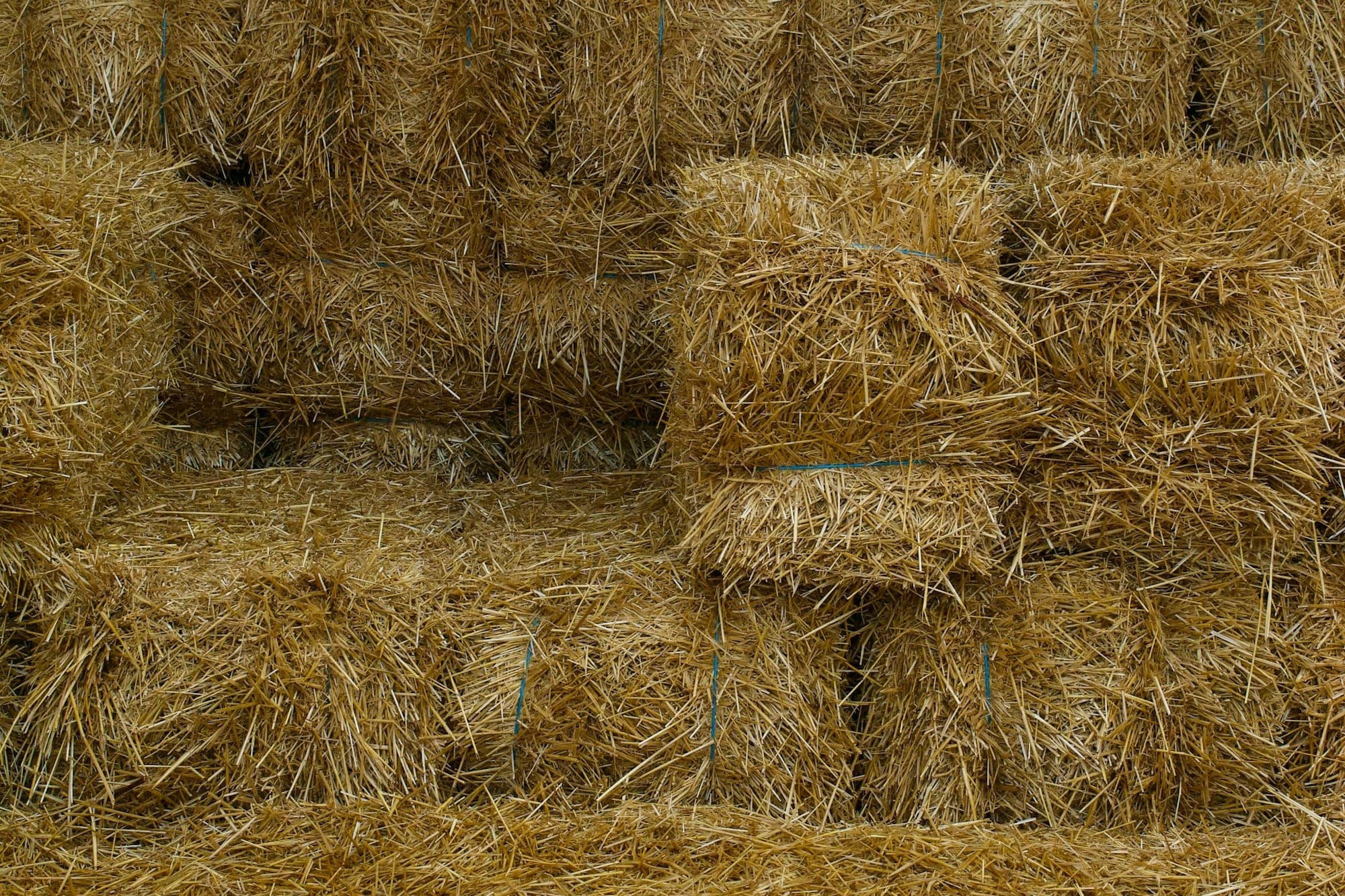What Are the Different Types of Hay? And how much should you actually be feeding your horse?
Timothy, alfalfa, orchardgrass... which hay is right for your horse? Understand the options, their benefits, and how much to feed so you’re fueling your horse’s body without overdoing it.

If you’ve ever stood in front of a stack of hay bales wondering whether your horse needs timothy, orchardgrass, alfalfa, or something else entirely, you’re not alone. Choosing the right hay (and the right amount) is one of the most important decisions you make for your horse’s health. But with so many types and opinions out there, it’s easy to get overwhelmed.
The Main Types of Hay for Horses
Most horse hay falls into two categories: grass hays and legume hays. Here's what that means:
Grass Hays
These are lower in protein and calories but high in fiber, making them a great option for most horses, especially those not in heavy work.
Common types:
- Timothy – A classic. Consistent, soft, and well-liked by picky eaters.
- Orchardgrass – Leafier and a bit higher in calories than timothy. Can be dusty if overmature.
- Bermudagrass (Coastal) – Popular in southern regions. Fine-stemmed but can cause impaction colic in some horses if too coarse or low quality.
- Brome – Soft, sweet-smelling, and usually very palatable.
Best for:
- Easy keepers
- Horses in light to moderate work
- Horses who need lots of chew time but not extra calories
Legume Hays
These are higher in protein, calcium, and energy. They’re richer than grass hays and may not be ideal for all horses.
Common types:
- Alfalfa – High in protein and energy. Great for hard keepers, lactating mares, and performance horses.
- Clover – Also a legume, but less commonly fed straight due to mold concerns. Often found mixed into pasture or hay blends.
Best for:
- Performance horses or hard-working horses
- Horses that need to gain weight
- Seniors who struggle to keep condition
Be careful: Too much legume hay (especially alfalfa) can lead to issues like diarrhea, excessive energy, or calcium imbalance if not managed properly.
How Much Hay Should You Feed?
It depends on a few key factors: your horse’s weight, workload, body condition, and the nutritional quality of the hay.
General Rule of Thumb:
Horses should eat 1.5%–2.5% of their body weight in forage (hay or pasture) per day.
For a 1,000 lb horse: That’s 15–25 lbs of hay daily, divided into 2–3 feedings if possible.
But here’s the twist:
- Grass hay can be fed free-choice to most horses without overfeeding.
- Alfalfa or mixed hay needs portion control to avoid excessive protein/calcium intake, especially in easy keepers.
A Simple Feeding Breakdown:
*Always monitor body condition and adjust accordingly.
Want to Get Specific?
You can have your hay tested for nutrient content (like protein, digestible fiber, calcium, etc.) through local extension offices or labs. This is super helpful if your horse has metabolic issues, ulcers, or special dietary needs.
Final Thoughts
Hay is the foundation of your horse’s diet and not all hays are created equal. Whether you’re feeding straight timothy or blending in a little alfalfa, the goal is to match your hay type and quantity to your horse’s individual needs. When in doubt, ask your vet or equine nutritionist for help, and don’t be afraid to experiment a little to find what works best.
Want to swap hay tips or see what others are feeding across the country? Join the TurnoutHQ community — we love talking hay, weird bale finds, and what our picky ponies will (and won’t) touch.
Sources & References
- National Research Council (NRC) – Nutrient Requirements of Horses
- American Association of Equine Practitioners (AAEP) – aaep.org
- University of Kentucky Extension – “Feeding Hay to Horses”
- The Horse Magazine – “Hay Types and Feeding Guidelines”
- Equus Magazine – “Choosing the Right Hay for Your Horse”
- Michigan State University Extension – “How Much Hay Does Your Horse Need?”

